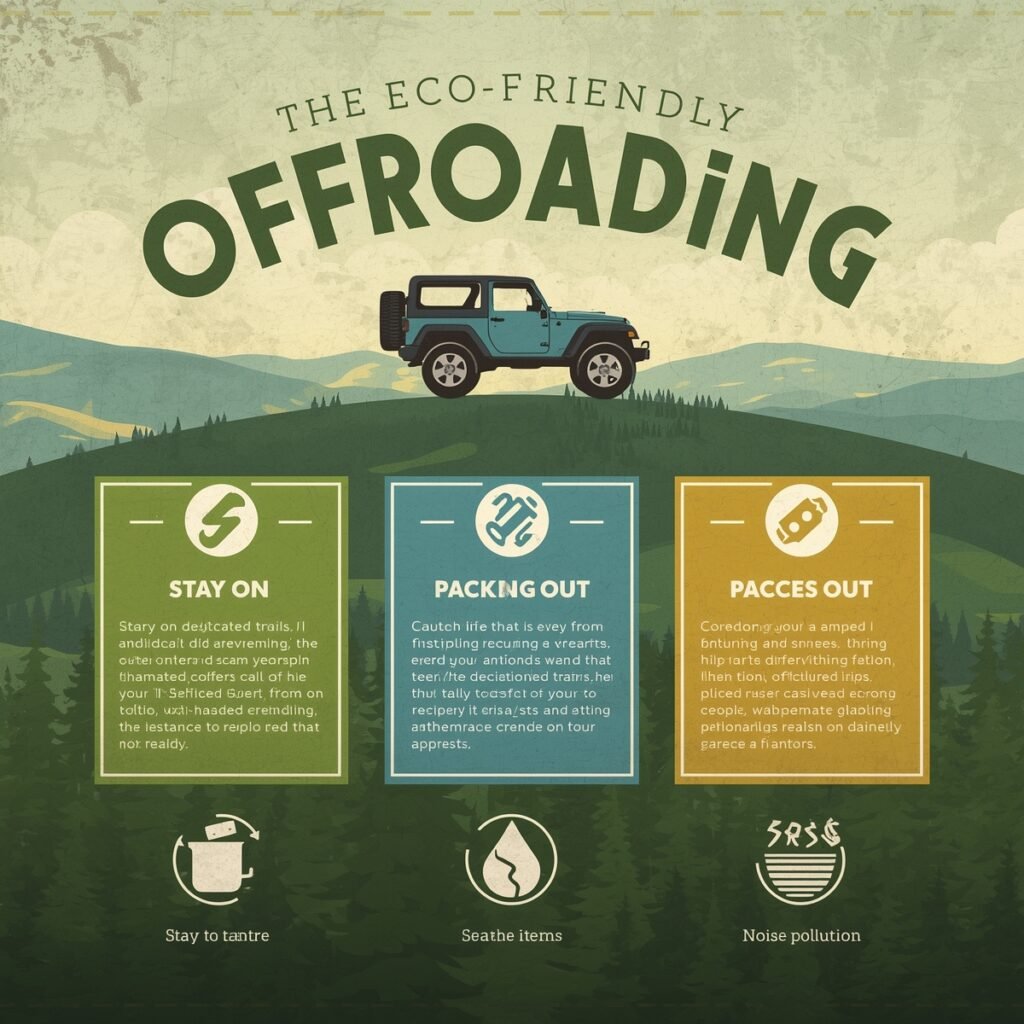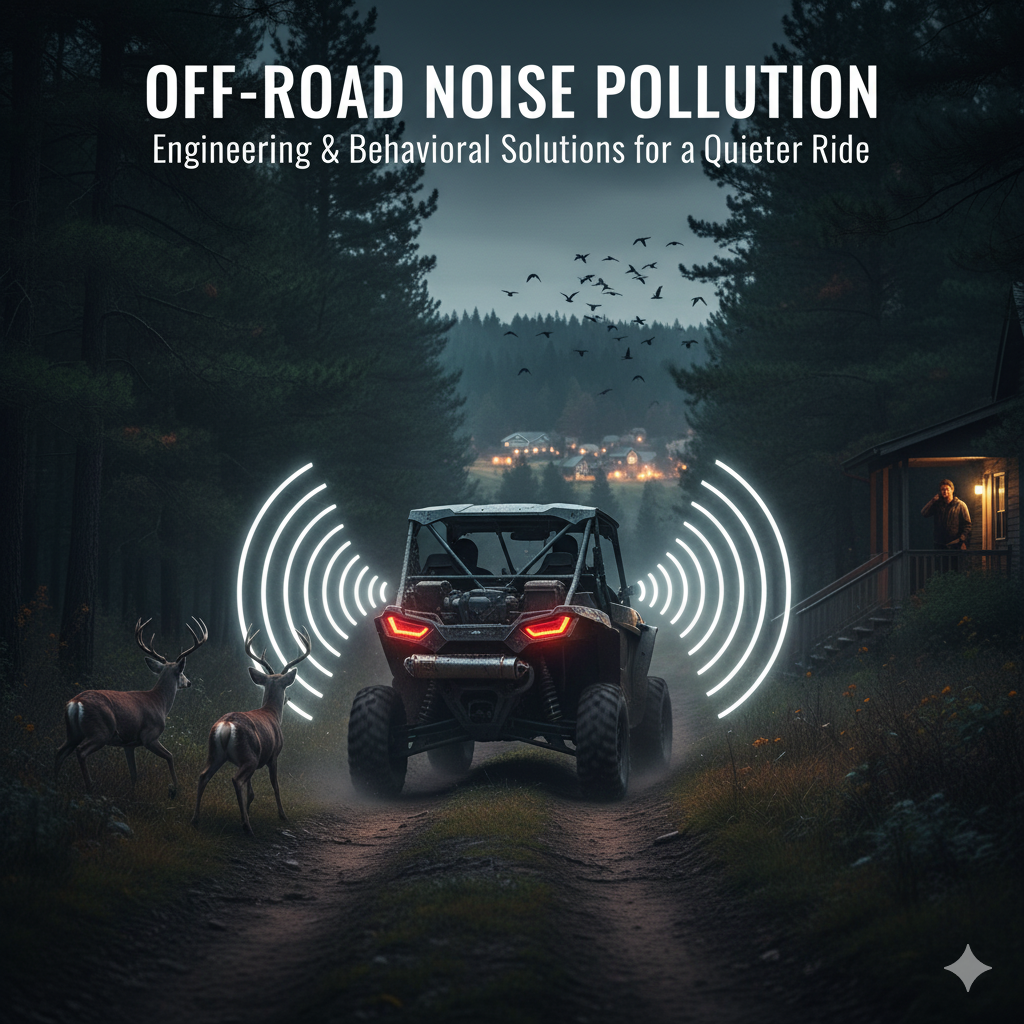The thrill of offroading—navigating rugged terrains, conquering challenging trails, and immersing yourself in the raw beauty of nature—is an experience like no other.
For many of us, it’s not just a hobby; it’s a passion that connects us to the wilderness in profound ways.
However, with great adventure comes great responsibility.
As off-roading gains popularity, the environmental impact of our actions becomes increasingly significant.
Trails suffer from erosion, wildlife habitats are disrupted, and ecosystems face degradation due to reckless practices .
This is where eco-friendly offroading comes into play.
It’s not about restricting your adventures but about embracing practices that ensure these wild spaces remain pristine for future generations.
Whether you’re a seasoned off-roader or a beginner, this guide will provide you with actionable tips to minimize your impact on the wilderness while maximizing your enjoyment.
Let’s dive into how you can become a steward of the trails you love.
1. Understanding the Impact of Offroading
Offroading, when done irresponsibly, can have severe consequences on the environment.
Here’s how:
- Soil Erosion: Driving off designated trails disrupts soil structure, leading to erosion and loss of vegetation .
- Wildlife Disturbance: Noise and movement can stress animals, disrupt breeding patterns, and even force them to abandon their habitats .
- Water Pollution: Crossing streams or driving near water bodies can sediment the water and introduce pollutants like oil or fuel .
- Trail Degradation: Creating new paths or widening existing trails damages fragile ecosystems and accelerates land degradation .
These impacts aren’t just theoretical—they’ve led to trail closures across the country.
For example, in Moab, Utah, 317 miles of OHV routes were permanently closed due to environmental concerns .
This serves as a stark reminder that our actions directly affect trail accessibility.
2. Principles of Eco-Friendly Offroading
Stay on Designated Trails
One of the simplest yet most effective ways to minimize your impact is to stick to designated trails.
These trails are carefully mapped to avoid sensitive habitats and cultural sites.
Venturing off-trail can damage plant life, disturb wildlife, and contribute to soil erosion .
Pro Tip: Use apps like Gaia GPS or Trails Off-Road to find certified trails before your trip .
Practice Leave No Trace
The Leave No Trace principles are a cornerstone of responsible offroading:
- Pack It In, Pack It Out: Never leave trash behind. Bring a trash bag to collect your waste—and even pick up litter left by others .
- Minimize Campfire Impact: Use established fire rings or portable stoves to avoid wildfires .
- Respect Wildlife: Observe animals from a distance and avoid feeding them .
Reduce Your Carbon Footprint
Offroading isn’t exactly carbon-neutral, but you can take steps to reduce your footprint:
- Carpool: Share rides with fellow off-roaders to reduce the number of vehicles on the trail .
- Maintain Your Vehicle: Regular maintenance improves fuel efficiency and prevents leaks that could harm the environment .
- Choose Eco-Friendly Modifications: Opt for tires and parts that minimize soil disruption .
3. Preparing Your Vehicle for Sustainable Offroading
Eco-Friendly Modifications
- Tires: Choose tires designed for low impact, such as those with less aggressive treads to reduce soil disturbance .
- Skid Plates: Protect your vehicle’s undercarriage to prevent fluid leaks that could contaminate the soil .
- Electric and Hybrid Options: Consider transitioning to electric UTVs or hybrids, which produce fewer emissions and noise .
Regular Maintenance Checks
- Check for Leaks: Ensure your vehicle isn’t leaking oil or other fluids that could harm the environment.
- Exhaust Systems: Install spark arrestors to prevent wildfires .
- Noise Reduction: Modify your exhaust system to reduce noise pollution, which can disturb wildlife and other trail users .
4. Tips for Responsible Trail Use
Follow Seasonal Closures
Trails are often closed during certain seasons to protect wildlife during breeding periods or to prevent damage during wet conditions.
Always check for local regulations before heading out .
Drive Responsibly
- Avoid Mudding: Unless you’re in a designated area, avoid driving through mud, which can cause ruts and erosion .
- Use Low-Pressure Tires: Reducing tire pressure improves traction and minimizes damage to the trail .
- Travel in Small Groups: Larger groups can cause more significant trail damage and increase noise pollution .
Respect Cultural and Historical Sites
Many trails are near culturally significant areas.
Avoid disturbing these sites, and never remove artifacts or graffiti .
5. Engaging in Conservation Efforts
Participate in Trail Cleanups
Join local off-road groups or organizations like Tread Lightly! for trail cleanup events.
These activities help repair damaged trails and remove litter .
Advocate for Responsible Offroading
- Educate Others: Share your knowledge of eco-friendly practices with fellow off-roaders .
- Support Conservation Organizations: Donate to or volunteer with groups dedicated to preserving off-road trails .
Use Your Voice
Engage in public comment periods for trail management proposals.
Your input can help shape policies that balance recreation and conservation .
Conclusion
Eco-friendly offroading isn’t about sacrificing adventure—it’s about ensuring that the wilderness we love remains untouched and accessible for years to come.
By adopting responsible practices, we can protect fragile ecosystems, support wildlife, and maintain the trails that bring us so much joy.
Remember, every small action counts: whether it’s staying on designated paths, packing out your trash, or educating others.
Let’s commit to being stewards of the wilderness.
Share your own tips for sustainable offroading in the comments below, and let’s inspire others to join the movement!





